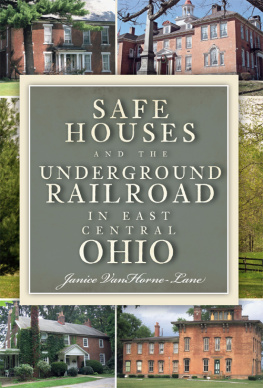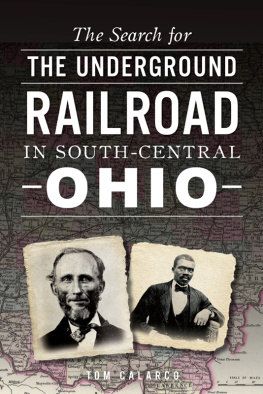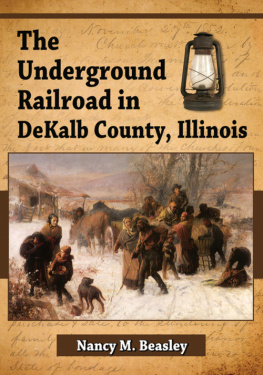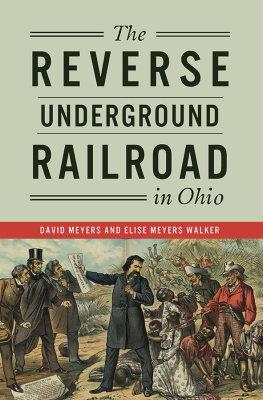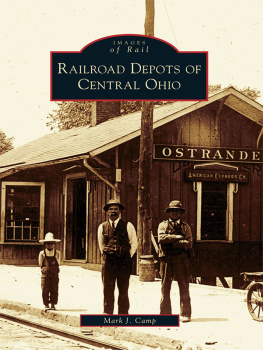Published by The History Press
Charleston, SC
www.historypress.com
Copyright 2020 by Nancy Stearns Theiss
All rights reserved
Front cover, right: Louisville waterfront sketch. University of Louisville Archives Special Collections
Digital Collections.
First published 2020
e-book edition 2020
ISBN 9781439668948
Library of Congress Control Number: 2019951837
print edition ISBN 978.1.46714.375.2
Notice: The information in this book is true and complete to the best of our knowledge. It is offered without guarantee on the part of the author or The History Press. The author and The History Press disclaim all liability in connection with the use of this book.
All rights reserved. No part of this book may be reproduced or transmitted in any form whatsoever without prior written permission from the publisher except in the case of brief quotations embodied in critical articles and reviews.
PREFACE
In 2005, the Oldham County History Center launched a research program to explore the sites that were described by native son Henry Bibb (18141854). His narrative, published in 1849, The Life and Adventures of Henry Bibb: An American Slave, was an essential part of the Underground Railroad movement. I discovered Bibb when I was doing research for an African American exhibit in our museum. Bibb was well known among academic circles, but for me, who grew up in Oldham County, Kentucky, his name was unknown.
Reading his narrative for the first time was difficult. As he described his life in the community where I grew up, I was horrified, sad and angry. It was upsetting for me to think that we had never lifted this man up in his native home. The acts of inhumanity and torture directed toward him; his wife, Malinda; and daughter, Mary Frances, from slaveholders were unthinkable within the context of a community where I was raised.
At the time that we began to recognize Bibbs contributions in our history center, there was a lot of activity in our region regarding the Underground Railroad (UGRR). In 1998, the National Park Service launched a new program, the National Underground Railroad Network, that encouraged local groups to research local sites and nominate them for membership in the network. The criteria being that the site must be either a place of escape for a freedom seeker or a place of refuge. This corresponded with a large effort in Cincinnati to raise funds for a new museum, the National Underground Railroad Freedom Center, which was prominently built on the Ohio River waterfront between the Bengals and Reds stadiums. For a featured exhibit, a slave pen jail, built and owned by John Anderson from Mason County, Kentucky, had been moved from Mason County and was reconstructed at the National Underground Railroad Freedom Center.
The program that the Oldham County History Center began on Bibb in 2005 included some experts in slave history, such as Diane Coon, a local researcher who had been working to identify UGRR conductors and stations along the Indiana borders. Carl Westmoreland, a historian from the National Underground Freedom Center in the research and placement of the Anderson Slave Jail from Mason County to Cincinnati, also attended that first meeting.
The most critical person for our research and studies from that first gathering in 2005 has been archaeologist Jeannine Kreinbrink. Jeannine was the lead archaeologist for the deconstruction and reconstruction of the Anderson Slave Jail at the Freedom Center. Her critical work gave context to the lives of those enslaved in Andersons jail and provides insight to the daily activities that would have occurred between the Anderson family and those gathered and chained as slaves for shipment to the larger slave markets.
We began a partnership with Jeannine and her associate, Doug VonStroh, to conduct archaeological programs identified from our group research as the Bibb Escapes/William Gatewood Plantation. The site, now on the National Park Service National Underground Railroad Network, is where Bibb, Malinda and Mary Frances were enslaved by William Gatewood. Gatewood was a justice of the peace and state representative for Oldham County when the county was first organized in 1824. This site, outside of Bedford, Kentucky, was part of Oldham County until 1836, when boundary lines were redrawn to form Trimble County.
The Bibb Escapes/Gatewood Plantation site is on private property owned by World War II veteran Colonel Glen Fisher. A native of Trimble County, Colonel Fisher has very generously given permission for the Oldham County Historical Society to conduct archaeology programs at the Gatewood site where Bibb and his family lived until they escaped, were recaptured and were sold down the river to the New Orleans slave markets. In his time on German occupied battlefields during World War II, Colonel Fisher witnessed and experienced the sacrifices for freedom. His generosity has provided opportunities for hundreds of students and families to participate in archaeology programs conducted under the guidance of Jeannine and Doug. In 2007, we began our first dig, and with support of our board of directors and members of the Oldham County Historical Society, we have had four public digs and an annual field study for high school students each year.
Archaeologist Jeannine Kreinbrink with students at the summer field study on the Bibb Escapes/Gatewood plantation site. Authors collection.
In 2016, we were recognized by the National Park Service for adding two sites to the National Underground Railroad Network: the Bibb Escapes/ Gatewood Plantation and the J.C. Barnett Library and Archives. We now offer National Park Service passport stamps for visitors. The Barnett Library and Archives are part of our Oldham County History Center campus and contain many slave court documents, including escapes, ownership papers and court cases. The Barnett Library and Archives was the home of James and Amanda Mount around 1840. In 2004, Lucretia Davenport donated a collection of items that belonged to Amanda Mount (18141888) and were passed down through the Mount family. The papers included runaway ads (placed by James Mount, who served as jailor at the time), family slave ownership papers, bounty hunter ads and personal family letters describing slaveholdings, sells and deeds.
When we had our ceremony to dedicate our Bibb site and Mount House to the National Park Service, I had the opportunity to meet Dr. Afua Cooper, who was our invited guest for the induction ceremony. Dr. Cooper is the James Robinson Johnston Chair of Black Canadian Studies at Dalhousie University in Nova Scotia and the founder of the Black Canadian Studies Association. Dr. Coopers dissertation was titled Doing Battle in Freedoms Cause: Henry Bibb, Abolitionism, Race Uplift, and Black Manhood, 18421854 (2000). Afuas research on Bibb, along with her personal experiences as a native Jamaican, where reggae culture embraces heritage, supported our efforts to uplift our own heritage at the Oldham County History Center.









